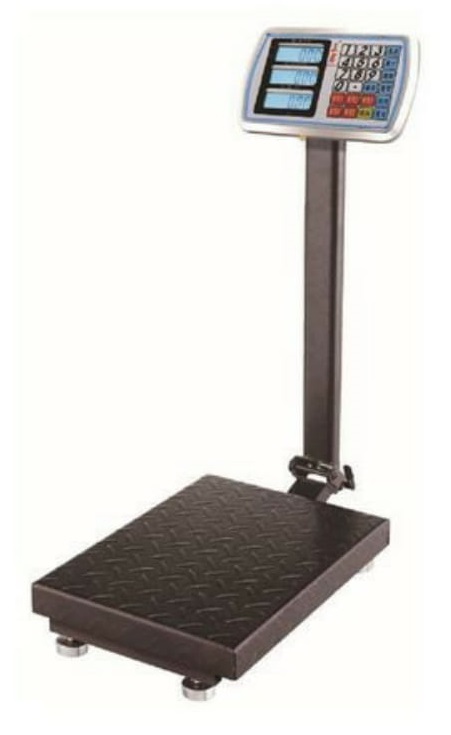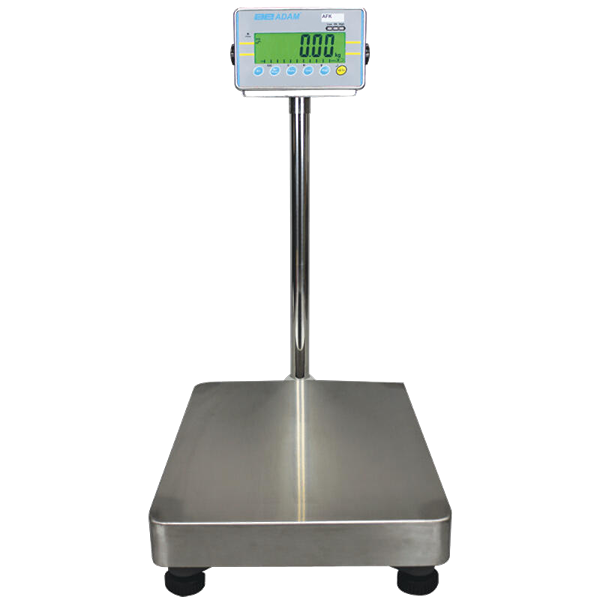Just How Commercial Scales Work: A Comprehensive Review for New Users
Comprehending the auto mechanics behind industrial scales is essential for new users who want to make certain precision in their dimensions. As we check out these parts, one need to take into consideration exactly how these components connect to enhance performance in diverse commercial applications.
Fundamentals of Industrial Scales
Industrial scales are crucial tools utilized across different fields, consisting of production, logistics, and farming, to make certain exact weight dimensions of heavy tons. The fundamental concept behind commercial scales entails the conversion of weight into a quantifiable kind that can be presented digitally or analogically. These scales employ numerous systems, such as lots cells or mechanical bars, to determine the weight of things placed upon them.

Along with their dimension abilities, commercial scales are developed to stand up to severe environments, featuring robust building that resists dirt, wetness, and heavy impacts. Calibration and maintenance are crucial to guarantee precision, as even minor discrepancies can cause significant economic implications. By comprehending the basics of commercial scales, users can appreciate their significance in various industrial applications.
Kinds of Industrial Scales
Numerous kinds of industrial ranges satisfy the varied demands of various sectors, each created to handle details weighing tasks with accuracy and integrity. Among one of the most usual kinds are floor scales, which are excellent for considering heavy and cumbersome products. These scales usually feature huge platforms and can fit palletized products, making them essential in storage facilities and delivery facilities.
An additional type is bench ranges, which are typically used for smaller things in production and retail settings. They give precise dimensions for products that call for precision, such as chemicals or parts in production line (Industrial Scales). For mobile procedures, portable ranges offer flexibility and simplicity of transportation, appropriate for fieldwork or short-lived installments
In applications requiring high-capacity dimensions, such as in bulk product handling, crane ranges and load cells are used. These scales can gauge lots put on hold from a crane or various other lifting device, ensuring security and precision during procedures. In addition, specialized ranges like checkweighers are used in assembly line to keep quality control by making certain that products meet weight specifications. Each kind of industrial scale plays a crucial duty in enhancing operational efficiency and precision across various markets.
Exactly How Evaluating Systems Work
Considering devices are essential parts that make it possible for precise measurement of mass throughout various industrial scales. These devices use different principles of physics and design to supply web accurate weight analyses, crucial for stock management, quality assurance, and conformity with regulatory standards.
One typical type of weighing system is the lots cell, which operates on the concept of stress gauges. When a lots is applied, the lots cell warps slightly, creating an electrical signal symmetrical to the weight. This signal is then exchanged a readable weight dimension by the scale's electronic devices.
Another extensively used device is the mechanical balance, which uses a system of weights and bars. Industrial Scales. This method counts on the principle of balance, where the weight of the object being determined is stabilized against recognized weights, enabling straight measurement
Furthermore, hydraulic and pneumatic ranges leverage liquid dynamics concepts to measure weight. These systems use the stress applied by a load to determine weight, offering high accuracy for enormous loads.
Appropriate Use Methods
When using commercial ranges, adhering to appropriate use techniques is vital for maintaining and making sure exact measurements equipment stability. First and leading, it is necessary to select the proper range for your details application, as ranges vary in capacity and precision.
Before evaluating, make sure that the range is put on a secure, degree surface area devoid of disruptions or resonances. This will assist to lessen errors brought on by outside aspects. Furthermore, calibrate the scale according to the producer's specifications prior to use, ensuring that it is functioning appropriately.
When positioning things on the range, distribute the weight evenly to avoid tipping or harming the tools. Constantly enable the scale to stabilize prior to taping the weight, as changes might occur during first positioning. For bulk products, use containers that are appropriate for site web the range dimension to stop overloading.
Additionally, avoid positioning cold or overly warm products directly on the range, as temperature variants can impact accuracy. Lastly, maintain the weighing system tidy and cost-free of particles to avoid contamination and ensure reliable outcomes. By following these methods, users can make the most of the efficiency and longevity of their commercial ranges.
Maintenance and Calibration Tips
Making certain the long life and accuracy of commercial ranges requires attentive upkeep and routine calibration. A precautionary upkeep schedule is crucial; it ought to include routine evaluations to recognize deterioration, especially on load cells and other delicate components. Consistently cleansing the scale's surface and making sure the bordering area is complimentary from particles will certainly help preserve its stability and efficiency.
Calibration is just as vital and need to be performed at regular periods or whenever the scale experiences considerable modifications in temperature level, moisture, or physical displacement. Utilize certified calibration weights that are traceable to national requirements for precision. Record each calibration session meticulously to track performance in time and determine any kind of fads or reoccuring issues.
Train all drivers on appropriate scale use and maintenance protocols to ensure regular efficiency and accuracy. By adhering to these upkeep and calibration ideas, users can enhance the integrity of their industrial scales, making certain ideal operation in any kind of setting.
Conclusion

Recognizing the webpage auto mechanics behind commercial ranges is vital for brand-new individuals that want to guarantee accuracy in their measurements.Industrial scales are essential tools utilized throughout numerous fields, consisting of production, logistics, and agriculture, to make certain exact weight dimensions of heavy tons. The fundamental principle behind commercial ranges includes the conversion of weight into a measurable kind that can be presented digitally or analogically. By understanding the basics of commercial scales, individuals can appreciate their relevance in numerous industrial applications.
In conclusion, recognizing the procedure and maintenance of commercial ranges is important for guaranteeing accurate weight dimensions in different applications. (Industrial Scales)